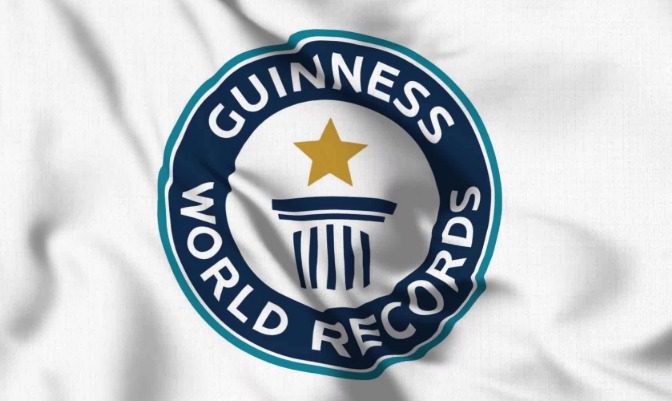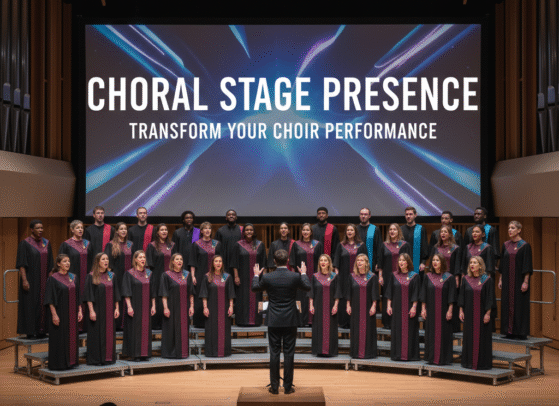The Fastest Pianist in the World | Who Holds the Record?
The piano, an instrument celebrated for its versatility and expressive range, has been at the heart of musical innovation for centuries. Among the myriad skills that pianists cultivate, the pursuit of speed—executing rapid key strikes with precision—stands as a remarkable testament to human dexterity and endurance. The quest to become the fastest pianist in the world has led to extraordinary achievements, with musicians pushing the boundaries of what was once deemed possible. This comprehensive exploration delves into the lives and accomplishments of these exceptional individuals, tracing the evolution of piano speed records and examining the impact of their feats on the musical landscape.
The Genesis of Piano Speed Records
The formal recognition of piano speed records is a relatively recent phenomenon, emerging prominently in the late 20th and early 21st centuries. Historically, virtuosity in piano performance was celebrated through complex compositions and technical prowess, but quantifying speed—such as the number of key strikes within a specific timeframe—became a focal point for certain pianists aiming to showcase their technical abilities. This shift reflects a broader cultural fascination with quantifiable achievements and the human limits of performance.
Notable Record Holders
Balázs Havasi: Early Benchmark Setter
In November 2009, Hungarian pianist Balázs Havasi set an early benchmark by achieving 498 piano key hits in one minute. This accomplishment brought attention to the concept of measuring pianistic speed and set the stage for future attempts to break the record.
Sai ‘Psychuck’ Manapragada: Breaking New Ground
In November 2011, Indian-American composer Sai ‘Psychuck’ Manapragada surpassed the previous record by executing 669 key hits in one minute. His record-breaking performance took place at a concert benefiting the Sankara Eye Foundation, highlighting his commitment not only to musical excellence but also to philanthropic endeavors.
Peter Bence: Setting a New Standard
In January 2012, Hungarian pianist Peter Bence elevated the standard by achieving 765 piano key hits in one minute. Bence’s innovative approach to piano performance, blending classical techniques with contemporary styles, garnered international recognition and a substantial online following.
Domingos-Antonio Gomes: Pushing the Limits
In June 2017, Portuguese-American pianist Domingos-Antonio Gomes surpassed previous records by achieving 824 key hits in one minute. Gomes employed a technique of rapidly alternating fingers on a single key, demonstrating remarkable speed and endurance.
In October 2024, Romanian concert pianist Thurzó Zoltán made headlines by striking a single piano key 500 times in 30 seconds. This achievement underscores the incredible feats pianists are capable of regarding speed and precision.
Keita Hattori: The Current Record Holder
On December 20, 2024, Japanese pianist Keita Hattori set a new benchmark by hitting 1,030 piano keys in one minute. This extraordinary accomplishment averages over 17 key hits per second, highlighting Hattori’s unparalleled precision and agility. At just 16 years old, Hattori’s dedication and talent have earned him a place in musical history.
The Evolution of Piano Technique and Speed

The remarkable achievements of these fastest pianist in the world are not solely the result of individual talent but also reflect the evolution of piano technique over centuries. From the intricate compositions of the Baroque era to the virtuosic demands of Romantic concertos, pianists have continually pushed technical boundaries. The development of advanced finger techniques, hand independence, and ergonomic playing styles has enabled modern pianists to achieve unprecedented speeds without compromising musicality.
The Role of Technology in Measuring Speed
Advancements in technology have played a crucial role in accurately measuring and validating these speed records. High-speed cameras, motion sensors, and specialized software allow for precise counting of key strikes, ensuring the legitimacy of each record attempt. This technological support has made it possible to document feats that were previously difficult to quantify, bringing a new level of objectivity to the assessment of pianistic speed.
The Impact on the Musical Community
The achievements of these record-holding pianists have profoundly impacted the musical community. They have inspired both admiration and debate among musicians, educators, and enthusiasts. While some celebrate these feats as demonstrations of human potential and technical mastery, others raise questions about the balance between speed and musical expression. Nonetheless, these records have sparked interest in piano playing, encouraging aspiring musicians to explore the instrument’s possibilities.
Training and Preparation: The Path to Speed
Attaining such high levels of speed requires meticulous training and preparation. Pianists often engage in specialized exercises to enhance finger strength, agility, and coordination. Mental preparation is equally important, as maintaining focus during rapid passages is crucial to prevent errors. Additionally, understanding the mechanics of the piano and optimizing hand positioning can contribute to achieving faster key strikes.
The Balance Between Speed and Musicality
While speed is an impressive aspect of piano performance, it is essential to balance it with musicality. Expressiveness, dynamics, and phrasing are core components of music that should not be overshadowed by technical prowess. The most esteemed pianists are those who can integrate speed seamlessly into their interpretations, enhancing the emotional impact of the music rather than the pursuit of speed in piano performance has captivated audiences and musicians alike, leading to remarkable achievements that push the boundaries of human capability. While the technical prowess required to achieve such feats is undeniable, it is essential to consider the broader implications of these accomplishments within the musical community.
The Broader Implications of Speed Records in Piano Performance
The establishment and pursuit of speed records in piano performance have sparked discussions about the role of technical feats in the broader context of musical artistry. While achieving a high number of key strikes per minute is an impressive demonstration of dexterity and endurance, it raises questions about the balance between technical skill and expressive depth in music.
The Virtuoso Tradition and Modern Speed Records

The tradition of virtuosity in piano performance dates back to composers and performers like Franz Liszt and Frédéric Chopin, who were renowned for their technical brilliance and expressive depth. In the modern era, the pursuit of speed records can be seen as an extension of this virtuoso tradition, emphasizing the physical capabilities of the performer. However, it is crucial to recognize that virtuosity encompasses more than speed; it includes a profound understanding of musicality, interpretation, and emotional communication.
Audience Perception and Musical Appreciation
For audiences, witnessing a pianist achieve a speed record can be exhilarating and awe-inspiring. Such feats draw attention to the physical demands of piano performance and can increase public interest in the instrument. However, there is a risk that the emphasis on speed may overshadow other aspects of musical appreciation, such as the nuances of interpretation, phrasing, and dynamic control that contribute to a compelling performance.
Educational Perspectives
In music education, the focus on speed records presents both opportunities and challenges. On one hand, it can motivate students to develop their technical skills and set ambitious goals. On the other hand, educators must ensure that students understand the importance of balance, emphasizing that technical proficiency should serve the music’s expressive and artistic goals rather than being an end in itself.
The Role of Innovation and Technology in Achieving Speed
Advancements in piano design and technology have played a significant role in enabling pianists to achieve greater speeds. Modern pianos are engineered with precision mechanisms that allow for rapid key repetition and responsive touch, facilitating faster playing. Additionally, the use of technology in practice, such as metronomes and recording devices, allows pianists to monitor their progress and refine their techniques systematically.
Ergonomics and Technique
Innovations in ergonomic design and an increased understanding of biomechanics have influenced piano technique, enabling fastest pianist in the world to play faster while minimizing the risk of injury. Techniques that promote relaxation, efficient movement, and optimal hand positioning contribute to the ability to execute rapid passages with greater ease and endurance.
The Psychological Aspects of Pursuing Speed
Achieving and maintaining high-speed performance on the piano involves significant psychological preparation. fastest pianist in the world must develop intense concentration, mental resilience, and the ability to remain calm under pressure. The mental demands of performing at such high speeds are considerable, requiring strategies for managing performance anxiety and maintaining focus during rapid passages.
Flow State and Peak Performance

Many fastest pianist in the world describe entering a “flow state” during peak performance, characterized by complete immersion and effortless control. Achieving this state can enhance the ability to perform at high speeds, as the pianist becomes fully engaged with the music and the instrument, leading to optimal performance outcomes.
Conclusion
The quest to become the fastest pianist in the world showcases the extraordinary capabilities of human dexterity and endurance. While these achievements are remarkable, they represent just one facet of musical artistry. True mastery of the piano encompasses a balance of technical skill, expressive depth, and interpretative insight. As the musical community continues to evolve, it is essential to celebrate both the technical feats and the profound artistry that together define exceptional piano performance
Related Blogs
At The Mystic Keys, we believe that mastering the piano practice structure is a journey that combines passion, discipline, and the right guidance. Whether you’re a beginner or an advanced pianist, a structured practice routine is the cornerstone of progress.
At The Mystic Keys, we emphasize the importance of proper finger placement as the foundation for any pianist’s journey. Whether you’re just starting or refining your technique, mastering finger placement will not only improve your speed and precision but also prevent strain and fatigue.
A well-set piano greatly enhances the worship experience, making the environment more inviting and spiritually enriching. To achieve this, you must focus on both technical and practical aspects, ensuring the instrument seamlessly complements the service. Below is a step-by-step guide on how to effectively set a piano for worship.








